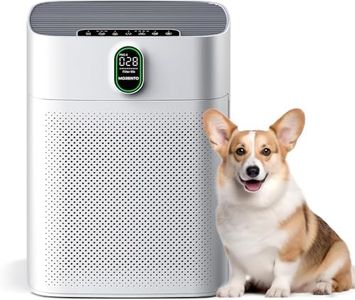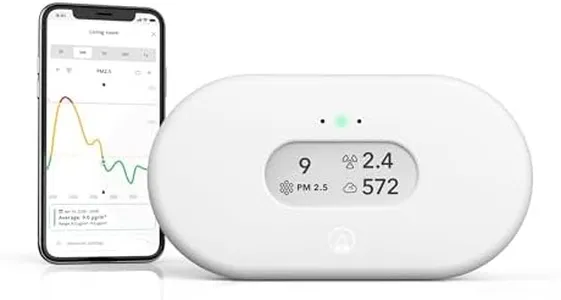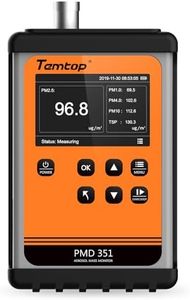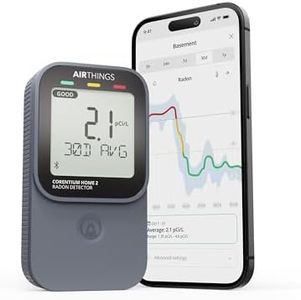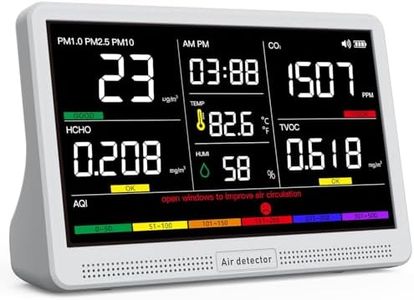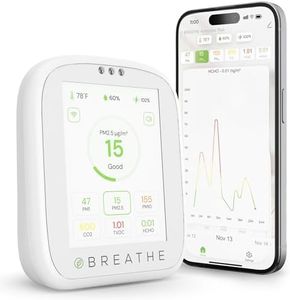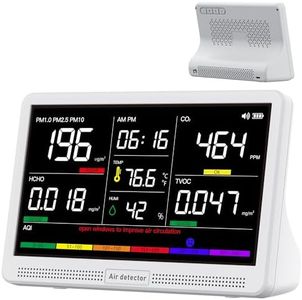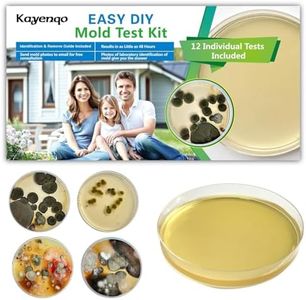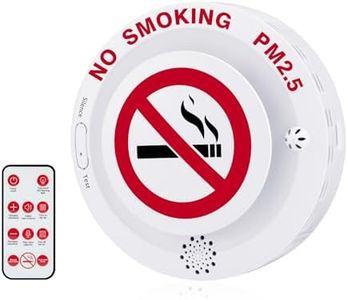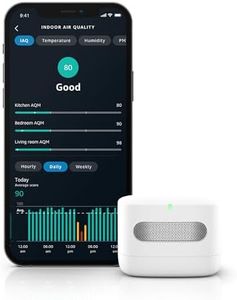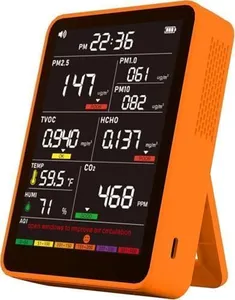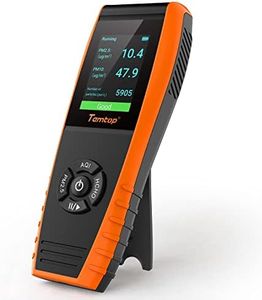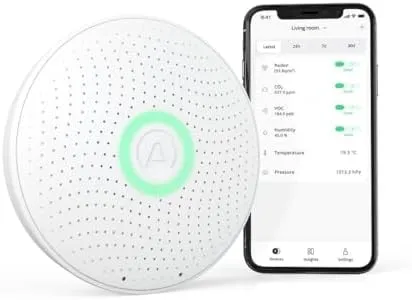10 Best Air Quality Tester 2025 in the United States
Our technology thoroughly searches through the online shopping world, reviewing hundreds of sites. We then process and analyze this information, updating in real-time to bring you the latest top-rated products. This way, you always get the best and most current options available.

Our Top Picks
Winner
Airthings 2960 View Plus - Battery Powered Radon & Air Quality Monitor (PM, CO2, VOC, Humidity, Temp, Pressure)
Most important from
1749 reviews
The Airthings 2960 View Plus is a comprehensive indoor air quality monitor that measures a wide range of pollutants including radon, PM2.5 (air pollution), CO2, VOCs (volatile organic compounds), humidity, temperature, and air pressure. This makes it highly versatile for those concerned about indoor air quality.
It is WiFi connected and requires the Airthings app, which provides real-time data and trends, making it easy to monitor and receive notifications about your air quality from anywhere. The app's user-friendliness and the ability to track local pollen forecasts are added conveniences. The monitor operates in temperatures ranging from 39.2°F to 104°F and requires internet access for full functionality.
It includes a customizable eInk display for clear visibility of readings and is battery-powered, allowing for flexible placement without the need for cables. It comes with a long battery life of up to 2 years, ensuring minimal maintenance. Additionally, the device includes a 5-year warranty upon registration, adding to its reliability. The requirement of an account and internet access for full functionality may be a limitation for some users. Furthermore, its accuracy, although reliable, may take up to seven days to reach optimal precision for radon detection. Nevertheless, for anyone looking to comprehensively monitor and improve their indoor air quality, the Airthings 2960 View Plus offers a robust solution with a user-friendly interface and extensive pollutant tracking capabilities.
Most important from
1749 reviews
Temtop PMD351 Professional Aerosol Mass Monitor - Handheld PM1.0, PM2.5, PM10 & TSP Monitor with RS-485 for Industrial Hygiene and Environmental Compliance
The Temtop PMD 351 is a handheld air quality tester that measures five types of particulate pollutants: PM1, PM2.5, PM4, PM10, and total suspended particles (TSP). It uses laser sensor technology with a stable pump system to deliver accurate readings, which is great for both professional and general use. The large, easy-to-read screen lets you focus on specific particle sizes, and its ability to store up to 2 million data sets means you can track air quality over time and export the information easily via USB.
Communication is improved with RS-485 protocol, allowing connection to larger monitoring systems, making it suitable for industrial environments as well. It weighs 9 pounds and has a desktop style, which may limit true portability compared to smaller handheld devices. If you need a robust and professional-grade air quality monitor that can integrate with other systems and handle detailed data logging, the PMD 351 is a strong candidate. However, for those seeking an ultra-light or highly portable device for casual home use, this model might feel a bit bulky.
Airthings 325 Corentium Home 2 Smart Digital Radon Detector - Portable and Easy-to-use Radon Testing with Bluetooth connectivity and Humidity & Temperature Sensors
Most important from
10667 reviews
The Airthings 325 Corentium Home 2 is a smart and portable radon detector designed to continuously monitor radon gas, a harmful pollutant linked to lung cancer. It measures only radon, not other pollutants, but it does include added temperature and humidity sensors to give a fuller picture of your indoor environment. Its accuracy is trustworthy, thanks to patented technology used by professionals, ensuring reliable long-term monitoring without needing lab tests.
The device pairs with a smartphone or tablet via Bluetooth, offering clear visual graphs in the app to track radon levels over time and get personalized advice on reducing risks. This makes it user-friendly despite no built-in digital screen on the unit itself. The detector is lightweight and compact, making it easy to move around and place in different rooms. It runs on two included AA batteries, offering good battery life for continuous use. Calibration is maintained internally, so you do not need to perform manual calibrations, reducing hassle.
It only detects radon, so if you want a device measuring other pollutants like carbon dioxide or VOCs, you'll need a different tester. Also, results depend on long-term data collection, so it is less useful for instant readings. If your main concern is radon safety at home with easy smartphone access and reliable data, this Airthings model is a solid choice.
Most important from
10667 reviews
Buying Guide for the Best Air Quality Tester
Choosing the right air quality tester is essential for ensuring that the air you breathe is safe and healthy. An air quality tester measures various pollutants and environmental factors in the air, helping you identify potential health risks. When selecting an air quality tester, it's important to consider several key specifications to ensure it meets your needs. Understanding these specifications will help you make an informed decision and choose the best device for your specific situation.FAQ
Most Popular Categories Right Now
